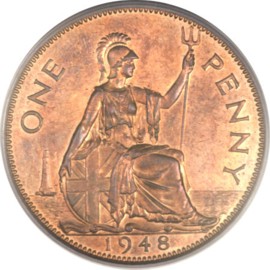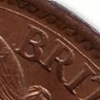|
|
The current range of books. Click the image above to see them on Amazon (printed and Kindle format). More info on coinpublications.com |
|
|
-
Content Count
2,537 -
Joined
-
Last visited
-
Days Won
162
Posts posted by secret santa
-
-
10 hours ago, Rob said:It is the TPGs and collectors who assign the 'Cameo' designation. I wouldn't be surprised if all the RM worries about is the polished field, the sharp milling and the square edging to characters and the rims that is required for a proof.
So, Rob, are you saying that all proofs are struck in the same way but some emerge with the "super sharp" effigy and mirror fields ? i.e. all proofs are equal but some are more equal than others ?
-
Plenty of plausible theories but who can give the definitive answer ? The Royal Mint ?
-
The term "cameo" gets bandied around quite a lot without, as far as I know, an unambiguous description. It is certainly dangerous to draw conclusions from photographs as to whether a coin is cameo or not. It appears to me that the method of photography and lighting etc can make huge differences to the appearance of a coin.
For example, I own 2 1948 proof pennies and the photographs that I took with my digital SLR, macro lens and built-in flash make them look like cameos and yet when I hold them in hand they are clearly not. Terry Eagleton sent me a 1953 proof penny which looks like a cameo in hand but my photographs of it do not !
I'm assuming that a true cameo appears to have a darkish background with a lighter "frosted" raised image ?
My photo on left
 This the original Heritage photo which is more as it appears in hand.
This the original Heritage photo which is more as it appears in hand.
The basic message, as always, is to be wary of photographs and judge it in your hand wherever possible !
-
 3
3
-
-
You're right and I've now found it but it's a PDF and too big to attach.
-
I think I remember Peter Andrew buying a lot from LCA (Elstree collection ?) which included a document regarding 1897 variations. He sent me a copy but I've saved it to somewhere that I can't find !
-
I agree with Jerry. It's quite easy on worn coins to convince oneself that something is not as it should be, but collectibility is in the eye of the beholder although, as Jerry says, it is best to confirm genuine oddities on coins in EF or better condition (assuming one can find them - but if you can't, it probably means that they are not worth recording).
-
Catalogues won't be out for a little while.
-
8 minutes ago, secret santa said:No - a useful guide is that the top of the curved part of the 3 is just about level with the top of the curved part of the 6 on open 3 varieties but lower on normal varieties.
Actually, ignore that, it's not always true !!!
-
No - a useful guide is that the top of the curved part of the 3 is just about level with the top of the curved part of the 6 on open 3 varieties but lower on normal varieties.
-
Desperately sad to lose a fellow lover of coins.
-
 2
2
-
-
Here are the pictures of Louise's 1860 penny.


-
The waves are the clue - clear daylight between base of waves and double exergue.
-
Pareidolia........................
-
 1
1
-
-
Thanks Mike - fascinating and very relevant to numismatics !
-
 1
1
-
-
1 hour ago, jelida said:pareidolia
That's not in my dictionary, Jerry - is it an obscure Welsh word ?
-
If you haven't got it, buy "The Standard Guide To Grading British Coins" (from Predecimal). It nicely describes and illustrates the grades (states of wear) on all the major obverses and reverses. Every design has its high point of relief which shows wear first, and on George V obverses it's around the eye and top of ear which wears first, reducing it to EF as in your 1934 penny.
-
2 hours ago, 1949threepence said:Bernie Weightman
My mate Bernie Workman will be most upset !!!!!
-
Yup, F33. Take a look at my varieties website (below) to help with identifying obverse/reverse varieties.
-
 1
1
-
-
I believe that they are probably scarce rather than rare. The more we discuss them, the more people will check their own coins and the more will emerge from the woodwork. That's been true of the 1863 open 3, the 1903 open 3 and the 1911 hollow neck.
-
5 hours ago, Voynov_BG said:If someone has relatives or friends in Bulgaria, or someone is flying here, they are available at a price of 1000 pounds per coin.
I think you are slightly undervaluing them given recent sale prices.
-
49 minutes ago, terrysoldpennies said:Hi all,
Was having a browse through the rarest pennies site and came across the 1934 missing waves: https://rarestpennies.wordpress.com/1934-missing-waves/
Would you say this is one?
Liam
Could put the obverse up as well or PM me a photo and I'll add it to the website although they're coming out of the woodwork so fast that it may prove to be not so rare as I thought.
Richard
-
1 hour ago, mrbadexample said:I thought the same about this one. The dot, although very weak (and if it is even a dot), does seem to be in exactly the right place. If it's a result of die degradation, it probably starts small, right?
Could well be.
-
Fancy finding 2 rare English pennies in Bulgaria !!!
-
 Coinpublications.com
Coinpublications.com


1861 penny Overdate 1 over 0... or just mirage
in British Coin Related Discussions & Enquiries
Posted
Like Arsene Wenger, I see nothing.......